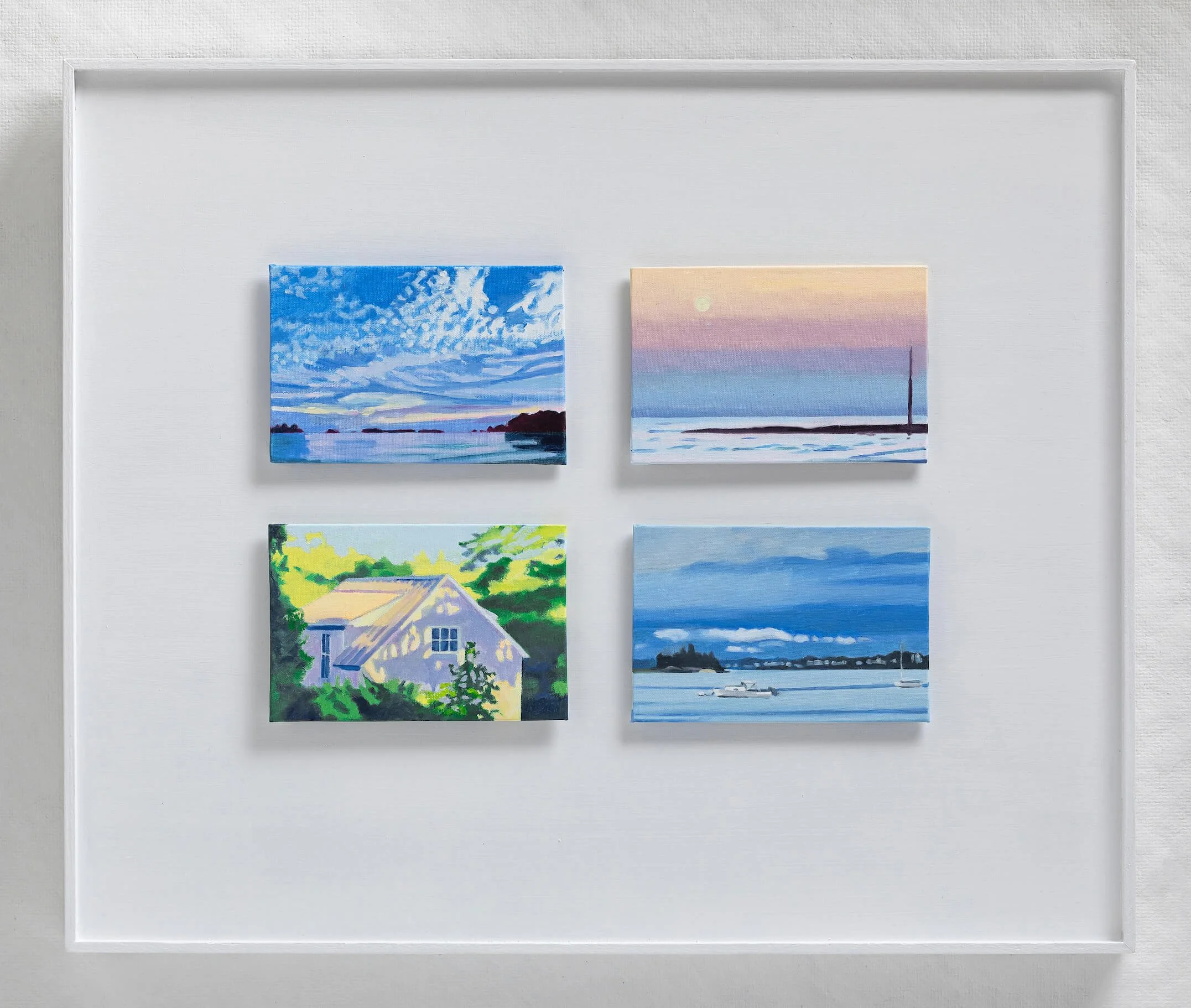Laura Barr
Laura Barr’s work is distinguished by rich color, simplified form, and light made material. Barr works in series, primarily in oil on canvas. She studied at Tufts University’s School of the Museum of Fine Arts, Boston. In addition to her BFA, she also holds a BA in Art History from Tufts University and studied at the Tyler School of Art in Rome, Italy.
Her work has been exhibited at Gallery Naga (Boston, MA), Prince Street Gallery (New York, NY), and other galleries in the Northeast, including Kehler Liddell Gallery and the Ely Center of Contemporary Art (New Haven, CT), the Alexey von Schlippe Gallery (University of Connecticut at Avery Point, CT), and The Paul Mellon Art Center (Wallingford, CT).
She is affiliated with 3 Walls Gallery (Brooklyn, NY), is an Associate Artist Member of the Lyme Art Association, a member of the New Haven Paint and Clay Club, and an Elected Member of Connecticut Women Artists. Awards include Second Honorable Mention, New England Landscape, Lyme Art Association (2023); New Haven Paint and Clay Club Active Member Memorial Award Honoring Emily Bett (2023); and the Gantner Gallery Award, Essex Art Association (2019).
Her work is held in many collections, including Yale-New Haven Health Services (New Haven, CT) and The Shapiro Center for Writing, Wesleyan University (Middletown, CT).
Artist Statement
My work explores color, transparency, reflection, and light. I am interested in the theme of impermanence; I depict blissful, fleeting, transcendent moments where the ordinary becomes extraordinary. I’m attracted to the intersection of representation and abstraction, simplifying form and creating compositions with strong underlying geometry. I enjoy the materiality of paint. I often use scale to illuminate my focus and work in series. I am drawn to water and am concerned with its preservation and protection. It’s a common thread in my painting, whether in a glass, a pool, a river, quarry, or sea.
The Here and There panels, which feature carefully curated and arranged collections of small canvases, are intended to be viewed as one work. Color, more often than subject matter, plays the dominant role in their creation.
The 4 inches by 6 inches—or “postcard size”—canvases depict fleeting, evocative moments or memories, and reflect life’s impermanence. They have been described as “visual haikus.” Sometimes playful, they are often moments of transporting quiet solitude, of awe and wonder at the beauty in our universe. In the act of viewing, one is taken away for a meditative moment or even, perhaps, an "oceanic experience."
The paintings are float-mounted on the panels, revealing dimension and casting shadows. The negative space, or what is known in Japan as “Ma,” is important in these panels. It provides space between the figurative "notes" of the paintings. At the same time, the use of a grid and simple framing presentation is suggestive of a bento box; each painting is to be enjoyed on its own but is an important part of a whole.
The series evolved during the 2020 pandemic, a time when many were feeling wistful about travel and connection. An alternate title for the series could be Wish You Were Here.
www.laurabarrart.com











